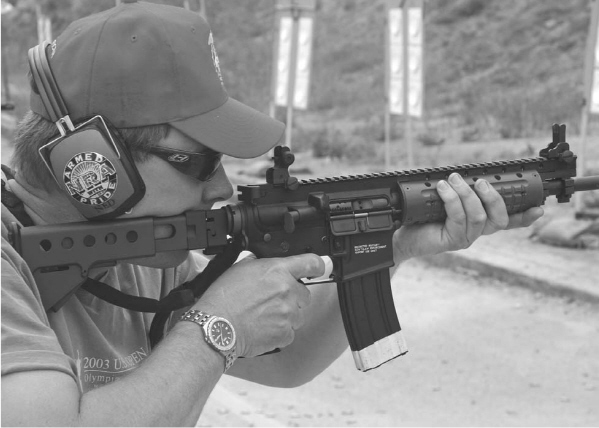
Z-M WEAPONS

The LR-300 proved to be a stellar tool for shooting perfect scores on range drills.
Al Zitta is a long-time businessman, a custom gunsmith and practical shooting competitor. I can’t remember a time when I haven’t seen him wandering around whichever IPSC match or Steel Challenge we were both at. There are those who like to brag about “thinking outside the box.” Al is one of those guys who simply refuses to acknowledge that there is a box. And when he does, it is usually only to throw it under his motorcycle, open the throttle, and kick it into gear.
He was kind enough to send me an LR-300 for the book. Actually, what he did was make me send him one of my lowers, to show that the LR-300 can be had not just as a complete rifle, but as a conversion on existing rifles too. So off went a Stag Arms lower, with a JP Enterprises modular trigger unit. What came back brought lust to the eyes of my test crew, and to the many police officers who saw it in a number of classes.
First things first: yes, that is a folding stock you see on an AR-15. Not simply a telescoping stock, but an actual folding stock. Patterned along the lines of the Galil, it is locked out by means of a big spring and inefficient camming surfaces. There isn’t a locking latch, but I never felt the need for one. This stock is not going to fold on you unless you are using it as a club and you break something. (Probably the lower receiver.) The stock he sent me is the folding and adjustable, so it can be made short for use with body armor, or long for use in shirtsleeves. He also has folding stocks that are not adjustable for length of pull. The stock assembly screws into the lower receiver buffer tube threads, and uses the same castle nut to lock in place.
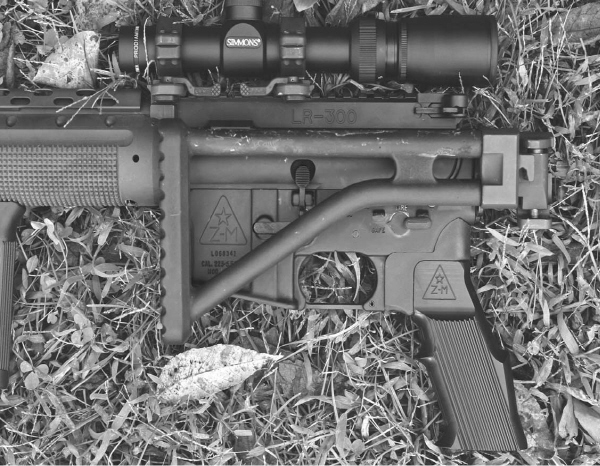
You can also have non-telescoping folding stocks.
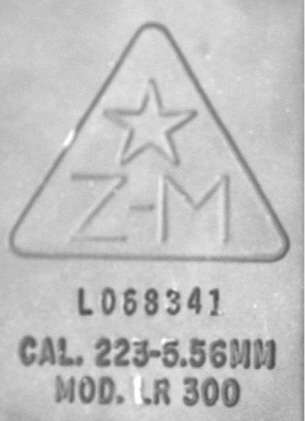
You can have Al send you a conversion or a complete rifle.
Now, the clever ones in the audience have already leapt ahead: there cannot be a buffer tube, weight and spring. So where’d they go? Up front, on top. The LR-300 is a horse of a different color. It isn’t exactly a piston-driven AR-15. Most designs simply replace the gas tube with some kind of a piston system, and leave the rest alone. Al took the LR-300 and extended the carrier key until it acts both to add mass to the bolt and as a sleeve over the gas tube. Think of a six-inch long carrier key. With everything up front, he could dispense with the back end.
How is this arranged? Take it apart and see. Up front, at the end of the top rail and in front of the front sight, is a recessed button. Press the button and slide the rail forward and off. Pull back and clamp down on the recoil spring, and then remove the spring clip. You can now relax the spring and remove the bolt and charging handle out the rear of the upper. Notice that the bolt has had the back half chopped off. That’s the part that would otherwise retreat into the buffer tube during cycling. Up front, the gas tube is half the length of a standard one.
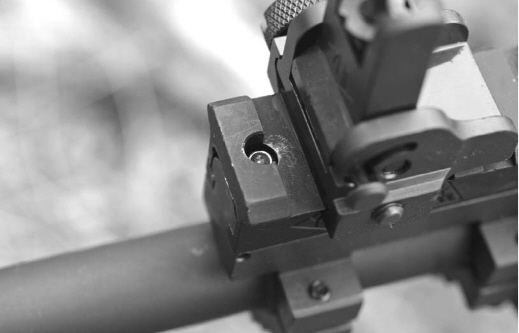
The disassembly button is in front of the front sight.
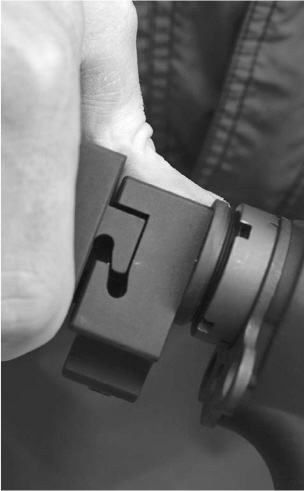
Z-17 The stock locks via a wedge cam and spring to keep it in place. It won’t come undone inadvertently.
How well does it work? So far, flawlessly. One complaint some shooters have with the various piston designs is that the extra mass of the piston increases recoil. And the extra hardware banging around on top of the barrel decreases accuracy. The reciprocating parts of the LR-300 weigh less than those of a standard AR, so you’d expect less recoil. It’s hard to tell, but it certainly doesn’t kick more. Accuracy? Plenty good enough for my two practical standards: shooting a 300 on the NEMRT qualification course and dropping all the targets on the NG computer pop-up course.
As I mentioned earlier, you can get this as a complete rifle from Al, marked as such with the Z-M Weapons logo. Or you can simply get the conversion kit to change your rifle over. If you do either, you have plenty of options.
First, the forearm material. You can get the Nylatron, which I did. Al, being Al, sent me that as well as an aluminum-forearmed upper with a Yankee Hill forearm on it. I might have been a bit jaded, what with a couple dozen other rifles with various aluminum forearms on them, but I prefer the Nylatron one. It has drilled and tapped inserts where you can bolt on rails if you need more. On top of the handguard was a Yankee Hill rail, with Yankee Hill sights. The YHM sights have one feature that only one other BUIS has at the moment you can fold the rear sight with the small aperture as the ready-to-go aperture. Except for nighttime, the small aperture is your best bet for accuracy while still maintaining speed. YHM gives you the choice of having small as your default (as does the GG&G MAD).
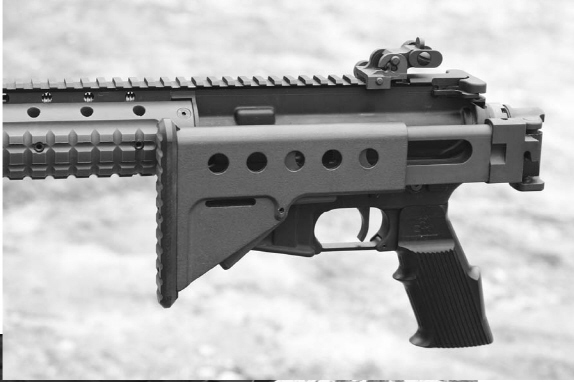
That’s right, a folding stock on an AR-15. Nowhere else. Be jealous.
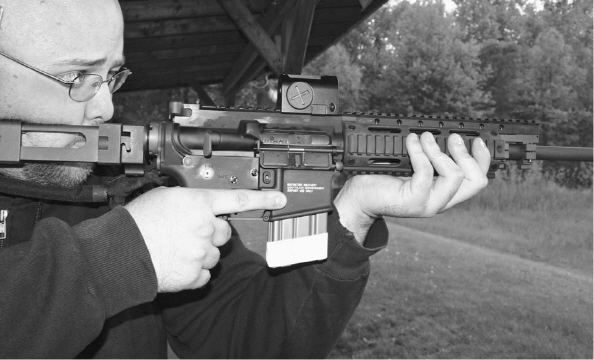
The LR-300 with the aluminum railed handguard. Very nice, but I prefer the Nylatron.
The upper is custom-forged and machined. The ZM forge marks will be found nowhere else but on an Al Zitta gun or conversion. The lower is a standard lower, either yours or Al’s, and does not require any modification. You can even install the Z-M upper on a standard lower and not worry. The buffer tube, weight and spring won’t change the function of the Z-M upper at all. One change on the lower you might notice is the pistol grip. I agree, it looks different. However, it is quite comfortable. It fits well enough that some of my test fire crew shot the Z-M rifle and never noticed the pistol grip until I pointed it out to them. It appears to be machined out of a block of Delrin, and it provides a non-slip grip and is comfortable to grasp.
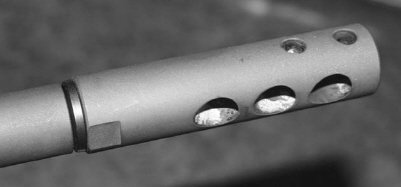
The Zitta brake is very effective despite its low profile. Just don’t stand next to it.
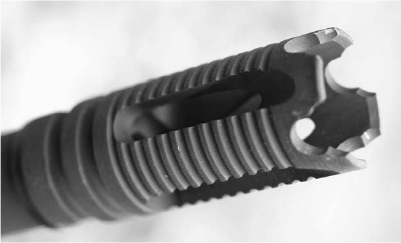
The YHM Phantom flash hider. Very effective, and the hooks also provide indexing locations for cutting wire.
The barrels are 1:9 and chrome-lined, and the two uppers came with two different muzzle devices. The Nylatron one came with a YHM Phantom flash hider, which works quite well. The other came with a slim compensator on it. While not much larger in diameter than the barrel itself, the comp Al sent was efficient enough that my test fire crew commented favorably on it. Most of them are regular practical shooting competitors themselves, and when they shoot a rifle and comment, “that comp works – who made it?” you know Al is on to something. For practical three-gun competition shooters, the comp is slim and short enough to make the Limited and Tactical Divisions of the USPSA: an inch or less in diameter, and three inches or less in length. As with all effective comps, standing next to it is unwise. The backblast is noticeable, and you will not make friends if you try to use it in a team environment.
The rifle came with a single-point bungee sling. Now, I’m not a great fan of either. Most single-point slings are attached (how shall I put this) clumsily, and bungee slings just look like trouble to me. I spent entirely too much time back in various martial arts classes learning to use people’s own efforts and equipment against them to be able to view with enthusiasm an elastic-corded seven pound weight. However, again, Al has done it right. The clip attachment is elastic-shrouded, so it remains unobtrusive. The bungee is firm enough that the rifle doesn’t flop around. If I were going to use a bungee sling, this would be the one.
The JP Enterprises trigger never failed and worked just fine. I did have to warn police officers who wanted to use it to look out for the trigger. Not that it is super-light or anything, but when they’ve been doing drills all week with a box-stock seven-pound M-16 trigger, going to the clean and crisp three and a half pounds of the JP could be a surprise.
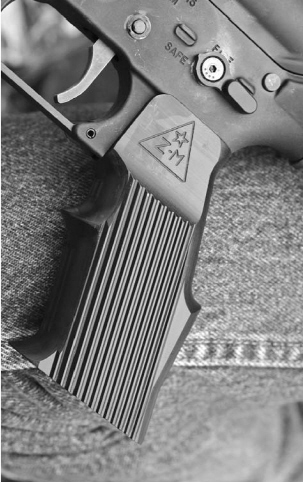
The Z-M pistol grip looks odd, feels good, and is indestructible. The JP Enterprises trigger is clean, crisp and an excellent competition choice.
The YHM rail on top accepted all mounts I cared to try, which were many. LaRue, GG&G, Midwest industries, Badger Ordnance, EOTech, Aimpoint, they all fit just fine.
One bonus feature that occurred to me was the ease of mounting a .22LR conversion upper to the Zitta-modified lower. Since the .22LR upper doesn’t recoil into the buffer tube, you need only use a filler to fill the gap the Zitta conversion leaves in the buffer tube area. (The cycling bolt needs the space in .223, so you can’t leave the filler there all the time.) Were I fitting a .22LR conversion upper to the Zitta lower on an LR-300, I’d attach a nylon or Delrin block to the rear plate of the .22LR action, and thus not run the risk of leaving it in for the .223 upper. Yes, it would make the assembly/ disassembly of the .22LR upper a bit fussier. I’d have to not use the standard hinge-open method, and instead press both pins over and pull the .22LR upper forward an inch or so before lifting it out.
The LR-300 is not for everyone. First, it will end up running you perhaps twice the cost of a bare-bones stock AR. You do, however, get a lot for that cost: a compact rifle with great reliability (mine hasn’t stumbled yet), great accuracy and a big wow factor. One might even say it garners a high CGI factor. If you’re in the habit of running your AR as an impromptu SAW, then the LR-300 is probably not for you. As trick as the gas system is, I can see where the high heat of volumes of full-auto fire might be a problem. The recoil spring is right there in the gas system. But short of such abuse, I don’t see where the LR-300 system is a hindrance. You also do not pay a weight penalty for all this. The Nylatron-forearmed rifle Al sent me tips the scales empty at 7-1/4 pounds. Yes, you can get an M4 or CAR lighter, but not by much. It is possible to pare perhaps half a pound off that by going to a pencil barrel and polymer CAR stock, but that’s it.
When it came time to send the rifle back, I could not unscrew the stock nut. I took this as a sign, and called up Al to make the arrangements to keep this one here. Yes, I have a lot of ARs, and tested a bunch more for the two books of mine, but this is the one I kept.
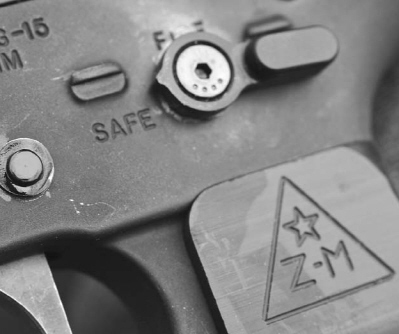
Off my Stag went to be rebuilt by Al and his crew. It came back superb.
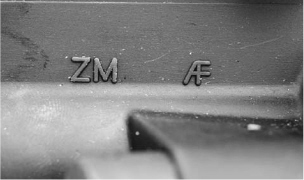
Only the LR-300 has a “ZM” forge mark.
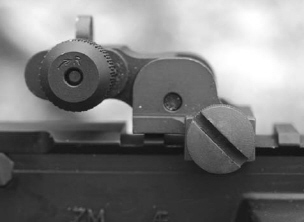
YHM makes a folding BUIS that lets you keep the small aperture as your selected aperture.